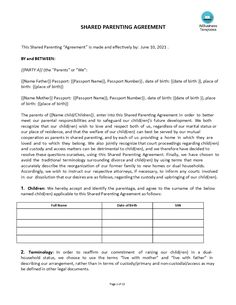3 Ways to Solve Literal Equations

Literal equations are algebraic expressions containing several variables. They play a vital role in various fields such as physics, engineering, and mathematics. Solving literal equations may seem daunting at first, but by breaking the process into manageable steps, you can easily master this mathematical skill. In this article, we will discuss three methods to solve literal equations: isolating the variable, using substitution, and applying the balance method.
1. Isolating the Variable
The first method to solve literal equations is isolating the desired variable on one side of the equation. To do this, follow these steps:
a) Identify the variable you want to isolate.
b) Observe all of the terms involving that variable.
c) Apply algebraic operations (e.g., addition, subtraction, multiplication, division) to move all other terms to the opposite side of the equals sign.
d) Simplify your equation according to the order of operations (PEMDAS).
Example:
Solve for x in P = Q + 3x.
a) Isolate variable x.
b) Subtract Q from both sides: P – Q = 3x
c) Divide by 3: (P – Q)/3 = x.
2. Using Substitution
Substitution is another effective technique for solving literal equations when you’re given multiple expressions for a particular set of variables. Here’s how to apply this method:
a) Choose one equation and solve it for one variable.
b) Replace that variable’s value in another equation, effectively making it a single-variable equation.
c) Solve this new equation.
d) Substitute back into the original equation(s) to find values for other variables.
Example:
Solve J = kL and J + L = N for k.
a) Solve J = kL for k: k = J/L
b) Replace k in J + L = N: (J/L)L + L = N
c) Simplify and solve for L: J + L = N.
d) Substitute back the value of k = J/L.
3. Applying the Balance Method
The balance method, sometimes called the “cross-multiplication” or “inverse operation” method, refers to performing operations on both sides of the equation to maintain balance while eliminating fractions or integrating coefficients. Here’s how to utilize the balance method:
a) Identify the primary term containing your desired variable.
b) If the term is written as a fraction, multiply both sides of the equation by the denominator to eliminate it.
c) If there are coefficients attached to your variable, divide both sides of the equation by that coefficient.
d) Simplify your equation according to the order of operations (PEMDAS).
Example:
Solve 2x – M/N = K for x.
a) Identify term with x: 2x.
b) Multiply both sides by N: 2Nx – M = KN
c) Divide both sides by 2N: x = (KN + M)/2N
In conclusion, solving literal equations need not be overwhelming. By employing techniques such as isolating the variable, using substitution, and applying the balance method, you can unravel complex algebraic problems with relative ease. Practice utilizing these methods regularly, and you’ll boost your confidence in tackling literal equations.






